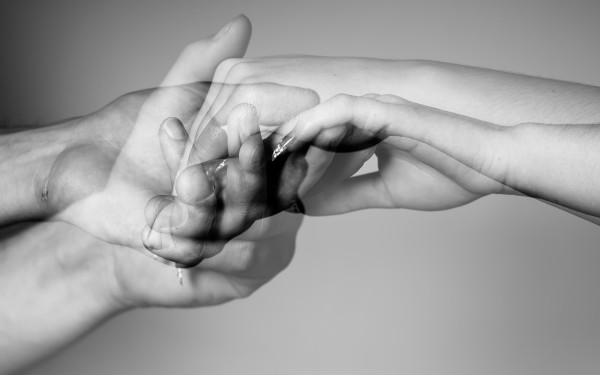The More the Merrier
The Benefits of Polyamorous Relationships
I never really considered the concept of being in relationship with different people simultaneously as having a name, or any sort of connotation at all. It was just a thing that happened, a friendship that shifted, with the added benefit of a sexual relationship.
While entertained by the free-love musings of bands like Jefferson Airplane and Love, the act of officiating these situations with definitions and promises sounded like a huge hassle.
I imagined it would involve much secrecy, and would undoubtedly amount to the over-use of pet names like “honey” and “sweetie” to avoid tripping up (à la John Tucker Must Die). In all likelihood I would end up generally lost, confused and in an inescapable pit of my own lack of regard for others.
Growing up in San Francisco among a host of non-traditional relationships—for example a friend with two sets of moms and dads, all of which identify as gay, yet wanted to raise a child together—loving who you love doesn’t really phase me.
There is never one template to define relationships, regardless of how many parties are involved.
Different Faces of polyamory
Stephanie* has been in two polyamorous relationships, both of which ended due to distance-related complications. She was in the midst of kicking a current casual sexual partner out of her bed in Granada, Spain when I got a hold of her.
“When we were equally having the same amount of sex with people this worked well, but when he stopped having sex with people, he wanted me to stop too, and the more controlling he was about it, the more sex I wanted to have,” she said.
“With [the second relationship], I stuck to the same theory, but sadly our rhythm of sleeping with other people never matched up. The more I didn’t want [him to sleep with just one person] the more I pushed him away, and the closer they became.”
While the relationships worked well when her partners were in the same city, Stephanie felt that there were issues of dishonesty and inequality, as well as a general lack of control, when they were apart. These days, she has opted to work on her own independence, happiness and self-love before diving into another monogamous relationship, and has decided to divide her time and energy into a variety of people instead of any individual.
Different people have different definitions of what polyamory is; James* sees it as a matter of primary and additional relationships.
“My partner and I are the ‘primary’ relationship and others that we choose to have, such as her and the other person she is seeing, are sort of ‘an addition.’”
“My partner and I are the ‘primary’ relationship and others that we choose to have, such as her and the other person she is seeing, are sort of ‘an addition.’”
Since being introduced to the idea by his partner a few months ago, James has learned a lot about polyamory—primarily that everyone has different needs, and that comfort is key.
“We don’t own each other, and as such we trust each other to make our own decisions, keeping in mind that we don’t want to hurt each other either,” he said.
“It’s important that any limits we impose are ones we willingly put on ourselves, not ones forced onto us by others, either those inside or outside of our relationship.”
Anna* became interested in polyamory when she noticed its increasing prevalence in her university. It would seem that jealousy would run wild in polyamorous relationships, but James and Anna say that wasn’t necessarily the case.
“It was a strange adjustment, but my partner [of three years] and I were very open and honest, not only about our desires and other partners but about the jealousy and feelings that came with those,” Anna said. “We decided to go with full disclosure. I was the first one to act on it, and this did cause a bit of an imbalance in the relationship, but explaining that connections with other people did not diminish my connection to my partner helped nullify insecurities.”
“It doesn’t make sense to limit people to a single partner or relationship,” says James. “If a person or people want to explore other options, as long as everyone involved is consensual, communicative and comfortable, I see no problem [with it].”
Anna found it helpful to view her sexual relationships as extensions of friendships. “A healthy relationship is a solid friendship foundation,” she says. “You don’t have only one friend at a time, so in the same way, if you meet someone else who is cool your friend hopefully doesn’t get territorial and make you decide.”
An Experiment Without a Name
Before moving across the continent to Montreal, I had been in a satisfied relationship for two years. When the question “Where are you going to university?” swept my high school, along came the subsequent question “What are you and Sam going to do next year?” which seemed lumped to the former as one long existential crisis.
It was my serial-monogamist mother who said I needed to “go out and explore a mix of good and bad lovers in order to know how special your relationship is.”
The advice seemed cheesy at the time, but her words helped remind me not to cling, and to instead celebrate what we can learn from each individual.
However, initially as a result of missing one another, my partner and I began sharing rather in depth play-by-plays of the sexual encounters we were having. Instead of trying to one-up one another, it became a forum to discuss what worked, what was wrong and the various kinks we were exploring—and I guess it became a kink in itself, too.
When I explain this to friends, the question of jealousy typically arises, but by laying all of our cards on the table my partner and I managed to avoid those jealous feelings.
This began as an experiment without a name, an attempt to salvage the longevity of my own monogamous relationship, but what has become increasingly more apparent is that in every kind of relationship we should see the full potential of the individuals involved.
And above all, it was the communication, consent, and the continuous checking-in with one another that has kept that particular relationship strong, not the number of people involved.
At this point in my life I have found myself in a series of polyamorous relationships. The people I choose to spend time with each fulfill different facets of my life that make me happy. A relationship that is sex-oriented is also just as friendship-, love-, respect-, trust- and communication oriented.
While these aspects come in different forms for different people, the celebration of the individual or individuals we find ourselves loving reigns true, whether we’re in love with one person or 10.
*name has been changed


_600_832_s.png)




